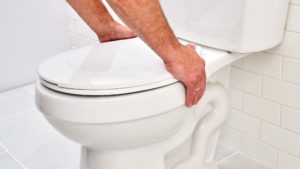5 Ways To Install Toilet In San Diego
Installing a toilet may seem like a daunting task, but with the right tools and guidance, it can be a manageable DIY project. Whether you’re replacing an old toilet or installing a new one, here are five ways to get the job done effectively.
Standard Floor-Mounted Toilet Installation
This is the most common type of toilet installation. Begin by setting the wax ring onto the flange, ensuring it’s centered. Then, carefully lower the toilet bowl onto the wax ring, making sure the bolts align with the holes on the base. Gently press down to secure the toilet in place and fasten the nuts onto the bolts. Connect the water supply line to the fill valve, turn on the water, and check for leaks.
Wall-Mounted Toilet Installation
Wall-mounted toilets are a modern and sleek option that can save space in small bathrooms. The installation process involves attaching the toilet tank and bowl to a carrier system mounted within the wall. Follow the manufacturer’s instructions carefully, as these can vary. Proper alignment and support are crucial for wall-mounted toilets, so consider seeking professional help if you’re not experienced with this type of installation.
Corner Toilet Installation
Corner toilets are designed to fit snugly into bathroom corners, maximizing available space. Begin by assembling the toilet components according to the manufacturer’s instructions. Place the wax ring on the flange and set the toilet bowl over it, securing it with bolts. Attach the tank and connect the water supply. Corner toilets are a unique option that requires precise measurements and positioning, so ensure you follow the instructions closely.
Floor-Mounted Back Outlet Toilet Installation
Floor-mounted back outlet toilets are commonly used in bathrooms where the waste pipe exits through the wall rather than the floor. Install the toilet similarly to a standard floor-mounted toilet, but ensure the waste pipe connection is properly aligned with the toilet’s outlet. This installation may require additional adjustments to the waste pipe and flange, so be prepared for some plumbing work.
Macerating Toilet Installation
Macerating toilets are ideal for adding a bathroom in areas with limited plumbing access. They use a macerating unit to break down waste before pumping it to the main drain. Install the macerating unit and connect it to the toilet, sink, and shower using appropriate pipes. These toilets are suitable for basements, attics, or other areas where traditional plumbing might be challenging.
FAQs
Can I Install A Toilet Myself, Or Should I Hire A Professional?
While simple toilet installations can be done by DIY enthusiasts, more complex installations like wall-mounted toilets or those requiring extensive plumbing work are best left to professionals. Proper installation ensures functionality and prevents leaks or damage.
What Tools Do I Need For A Toilet Installation?
The tools you’ll likely need include a wrench, pliers, a screwdriver, a level, a wax ring, bolts, a putty knife, and a measuring tape. Additionally, some installations might require specialized tools, so review the instructions beforehand.
How Can I Prevent Leaks After Installing A Toilet?
To prevent leaks, ensure the wax ring is properly placed and centered on the flange. Tighten the nuts securing the toilet bowl evenly to create a snug seal. Check the water supply connection for any leaks once the toilet is installed and water is turned on.
Please call Frasers Plumbing at (619) 332-0275 for any and all of your plumbing needs.
Conclusion
Give Fraser Plumbing Inc. a call right away to learn more about how our experts can help with leak detection in San Diego, CA.

